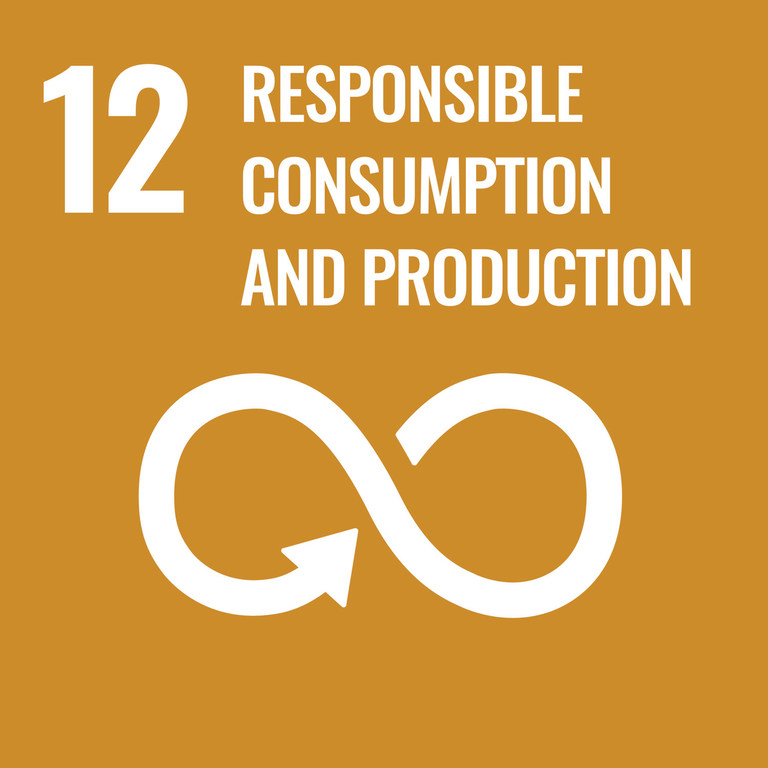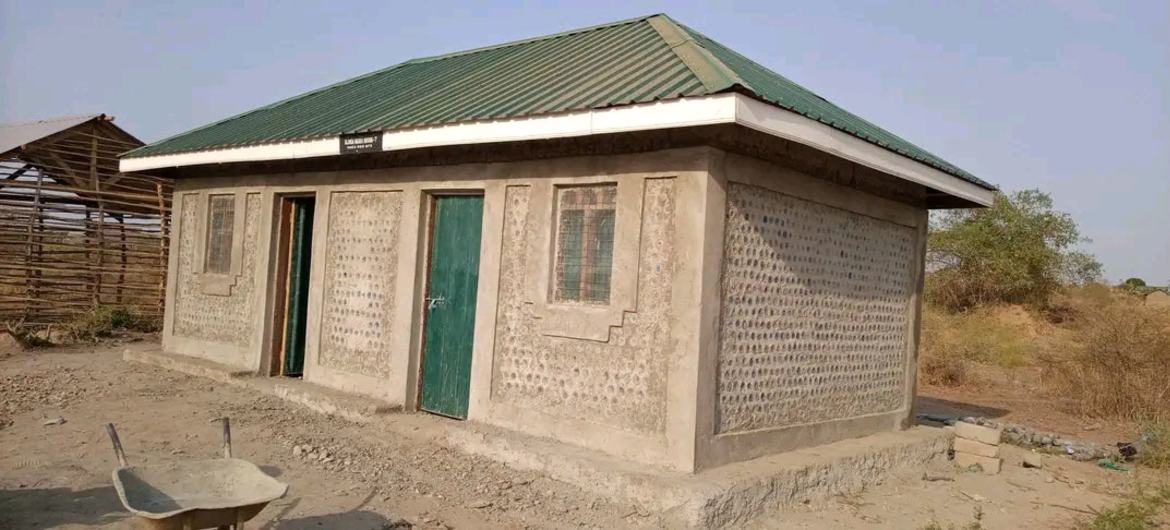Learn more about UN Peacekeeping Operations here.© UNMISS/Isaac BillyOver 200 million people rely on the Nile for their livelihoods, yet poor waste management can lead to chemical and plastic leakages that threaten ecosystem services, human health and economic prosperity.Inspired by umuganda, which means “coming together in common purpose” in Kinyarwanda – a monthly community clean-up campaign in Rwanda – UNMISS plans to organize more such events to bring people together to care for their environment.
Coping with climate shocks
A house in South Sudan built with plastic bottle bricks.© Andrew Ugalla“You use one third less cement in these buildings and no traditional bricks, so you are mitigating a lot of greenhouse gases, and these buildings can withstand massive tropical storms and even small earthquakes,” said Ms. Gazdar.Mr. Ugalla, a teacher, tells his students to bring two plastic bottles a day to school instead of fees so they can also contribute to the construction project, said Ms. Gazdar. This way, his students learn the value of recycling and to be resourceful.

Since South Sudan’s independence in 2011 following a historic referendum, it has faced many political, socioeconomic and environmental challenges. Despite its lush biodiversity, rivers teeming with life and a bounty of natural resources, it is among the five most climate-vulnerable countries in the world, according to the UN Environment Programme (UNEP).
SDG 12: SUSTAINABLE PRODUCTION AND CONSUMPTION
- Substantially reduce waste generation through prevention, reduction, recycling and reuse
- Achieve sustainable management and efficient use of natural resources
- Halve per capita global food waste at retail and consumer levels and encourage companies to adopt sustainable practices
- Support developing countries to strengthen their scientific and technological capacity to move towards more sustainable consumption and production patterns
- Implement policies to promote sustainable tourism that creates jobs and promotes local culture
- Phase out inefficient fossil fuel subsidies that encourage wasteful consumption
Plastic bottles can also make great light bulbs for energy efficient buildings. Here’s a hack from Shazneen Cyrus Gazdar of the UN Mission in South Sudan (UNMISS). All you need is plastic bottles, water and chlorine.
‘Innovate, use what you have and identify solutions’
[embedded content]
There is no shortage of plastic waste to reuse. Last year, at a clean-up event that UNMISS organized during World Environment Day, marked on 5 June, peacekeepers picked up 1,500 garbage bags worth of waste.“We are all coming together to make the centre,” she said. “The women police (officers) have given us their wish list of structures – offices, changing rooms, storage, toilets and training rooms. Our implementing partners, the NGOs, will basically construct the centre using upcycled plastic bottles and zero energy light bulbs.”

In recent years, a devastating cycle of floods and droughts have disrupted agriculture, exacerbated food security and affected approximately one million people annually. Above-average rainfall has inundated its rivers and tributaries, submerging large swathes of land, including homes, farms and schools.
“The NGOs have constructed an amazing collection of structures. Schools have been built out of these upcycled plastic bottles as well as [for] ablutions, houses, water tanks and community centres.”
SDG 12Find out more about how the world can end plastic pollution here.Climate scientist Shazneen Cyrus Gazdar (centre) and UN peacekeepers participate in a clean-up event in Juba, South Sudan, on World Environment Day in June 2023.Building essential structures in South Sudan with plastic bricks.United Nations
- Step 1: We’re using what we have. You take the same 1.5 litre plastic bottle [approximately 50 fl oz], add water and one or two tablespoons of bleach into this bottle of water.
- Step 2: Seal the bottle and insert it in areas where you may have traditional light bulbs.
- Step 3: Make sure that the top half of the bottle pops out of the structure so it can capture sunlight through refraction. Each bottle will light up about one and a half metres around it.